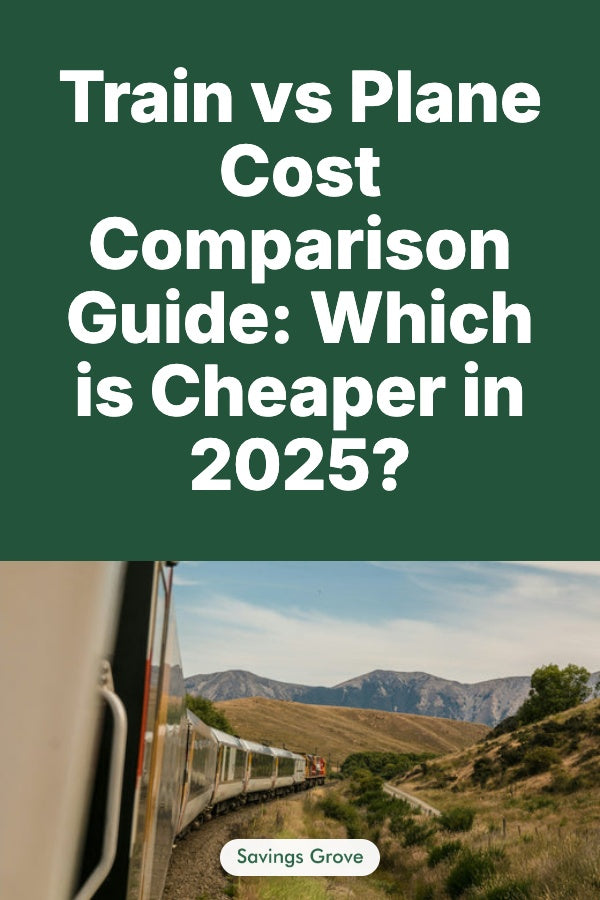
Looking to travel but unsure whether to choose the train or plane? Let's dive in!
Train vs Plane Cost Comparison Guide: Which is Cheaper in 2025?
This comprehensive guide breaks down the real costs of train and plane travel in 2025, helping you make the smartest choice for your wallet. From hidden fees to booking strategies, we'll explore everything you need to know to make an informed decision.
1. Short Distance Travel (Under 300 Miles)
For shorter journeys, trains often prove more economical. A typical train ticket between Boston and New York (approximately 215 miles) costs $29-89 on Amtrak, while flights range from $98-250. Additionally, trains offer city-center arrival, eliminating expensive airport transfer costs.
2. Medium Distance Travel (300-600 Miles)
Medium-distance routes present a closer competition. The Chicago to Washington DC route (approximately 700 miles) typically costs $79-159 by train and $119-289 by plane. Consider that train travelers avoid baggage fees ($30-60 per bag on most airlines) and expensive airport parking ($18-35 per day).
3. Long Distance Travel (Over 600 Miles)
For longer journeys, planes usually win on both cost and time. Los Angeles to Seattle flights average $129-279 on budget carriers, while the train journey costs $139-299 and takes significantly longer.
4. Hidden Costs Comparison
Understanding the full cost picture requires examining these additional expenses:
- Baggage Fees: Trains typically allow 2-3 bags free; planes charge $30-60 per checked bag
- Food/Drinks: Train dining cars offer meals $10-25; airport/plane food costs 30-50% more
- Transport to/from Station/Airport: Train stations usually central, saving $20-50 in transfer costs
5. Money-Saving Booking Strategies
Save money on both modes with these strategies:
- Book 2-3 months in advance for best rates
- Use price comparison tools like Rome2Rio
- Sign up for fare alerts on both train and airline websites
- Consider mixed-mode travel for optimal savings
Want to maximize your travel savings? Check out our guide on 12 Smart Tips on How to Save Money on Travel and Vacations in 2025 and 12 Best Flight Comparison Sites: Save Up to 80% on Travel (2025).
Final Words
The choice between train and plane often depends on your specific journey and priorities. For short to medium distances, trains frequently offer better value when considering all costs. For longer journeys, planes typically win on both time and money. Remember to factor in comfort, environmental impact, and the full door-to-door journey time when making your decision.
Related Articles
Frequently Asked Questions About Train vs Plane Travel Costs
When is it cheaper to take a train instead of a plane?
Trains are typically cheaper for journeys under 300 miles, especially when factoring in baggage fees, airport transfers, and parking costs. They're particularly cost-effective for city-center to city-center travel where airport transfers can be expensive.
How far in advance should I book to get the best prices?
For both trains and planes, booking 2-3 months in advance typically offers the best prices. Train tickets usually have more stable pricing, while plane tickets can vary significantly based on demand and booking timing.
Are there hidden costs I should consider when comparing train and plane travel?
Yes, consider baggage fees ($30-60 per bag on planes, usually free on trains), transportation to/from airports vs train stations ($20-50 difference), food costs (30-50% higher on planes), and parking fees ($18-35 per day at airports).
Which loyalty programs offer better value - train or plane?
Airline loyalty programs typically offer better monetary value for long-distance travelers, while train loyalty programs (like Amtrak Guest Rewards) often provide more flexible redemption options and fewer blackout dates for shorter trips.

